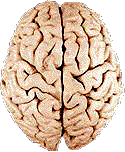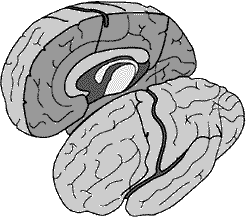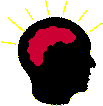 | Lopsided Stroke? People with strokes on the left side of the brain are admitted to hospitals more often than those with strokes on the right side |
 September 29, 2005
September 29, 2005A stroke is also called a "brain attack." It occurs when the blood supply to the brain is stopped. This can kill neurons if they cannot get enough oxygen. People who have a stroke may become paralyzed or lose their ability to talk ("aphasia"). In theory, the number of strokes that occur on the right and left side of the brain should be the same. Researchers have found, however, that patients who have had strokes on the left side of the brain are admitted to the hospital more often than people who have had strokes on the right side of the brain. It is unlikely that anatomical differences in the brain are responsible for the higher rate of left-sided strokes. The researchers suggest that the difference in the admissions of patients with right- and left-sided strokes is due to the difficulty in recognizing the symptoms of a stroke on the right side of the brain. People who have a stroke on the left side of the brain may lose their ability to speak. Remember, the left side of the brain is dominant for language in most people. Left-sided strokes may also cause people to have problems using their right (usually dominant) hand. The symptoms of right-sided strokes may be more difficult to recognize. People who have strokes on the right side of the brain sometimes are unaware of events that happen to the left side of their body, have problems interpreting body language and have problems using their left (nondominant) hand. They rarely have the language problems shown by people who have left-sided strokes. It is essential that patients and their families know the symptoms of a stroke when they occur on the right and left side of the brain because early treatment is the best way to avoid long-term problems. |
 References and more information about
stroke: References and more information about
stroke:
|
| BACK TO: | Neuroscience in the News | Table of Contents |
![[email]](./gif/menue.gif) Send E-mail |
 Fill out survey |
 Get Newsletter |
 Search Pages |
 Doctors in Germany examined the records of patients admitted to hospitals
between April 1997 and December 2002. They found that 20,097 patients
who had a stroke were admitted. Of these 20,097 patients, 11,328 (56.4%)
had a stroke on the left side and 8,769 (43.6%) had a stroke on the right
side.
Doctors in Germany examined the records of patients admitted to hospitals
between April 1997 and December 2002. They found that 20,097 patients
who had a stroke were admitted. Of these 20,097 patients, 11,328 (56.4%)
had a stroke on the left side and 8,769 (43.6%) had a stroke on the right
side.